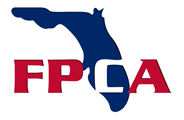Connections are fundamental to all buildings and construction no matter what material is used. The purpose of a connection is to transfer loads, restrain movement and/or to provide stability to a component or an entire structure. As such, the design of connections is one of the most important aspects in the design and engineering of precast/prestressed concrete structures.
Many different connection details will result from the combination of the multitude of sizes and shapes of precast concrete components and the variety of possible support conditions. Individual precast producers have developed connection details over the years that suit their particular production and erection preferences and they should be considered for a specific project early in the design stage. All connections should comply with applicable building codes and the final structural design should be done by an engineer licensed in the location of the project. It is common for the architect and engineer of record to show connection loads and locations on the contract documents and allow the successful precast producer’s engineering department to provide the final design and details of the connections.
This section is intended to provide basic information that is important to understand when designing a total-precast concrete structure or architectural cladding panels supported by building frames of other materials such as steel or cast-in-place concrete.
Connection Design Considerations
Precast concrete connections must meet a variety of design and performance criteria and not all connections are required to meet the same criteria. The basic criteria include:
-
Strength: A connection must have the strength to avoid failure during its lifetime.
-
Ductility: This is the ability of a connection to undergo relatively large deformations without failure. Ductility is achieved by designing the connection so that steel devices used yield before a weld or the concrete around the connection.
-
Volume Change Accommodation: Restraint of movement due to creep, shrinkage and temperature change can cause large stresses in precast concrete components and their connections. It is better to design the connection to allow some movement, which will relieve the build-up of these stresses.
-
Durability: When the connection is exposed to weather or used in a corrosive environment, steel elements should be adequately covered by concrete, painted, epoxy-coated, or galvanized. Stainless steel may also be used, however, the added cost should be considered carefully.
-
Fire Resistance: Connections, which could jeopardize the structure’s stability if weakened by high temperatures from a fire, should be protected to the same degree as the components that they connect.
-
Constructability: The following reflects only some of the items that should be considered when designing connections:
-
Standardize connection types
-
Avoid reinforcement and hardware congestion
-
Avoid penetration of forms
-
Reduce post-stripping work
-
Consider clearances and tolerances of connection materials
-
Avoid non-standard product and erection tolerances
-
Plan for the shortest possible crane hook-up time
-
Provide for field adjustments
-
Provide accessibility
-
Determine if special inspection is required per the applicable code for the material and the welding process
-
Provide as direct a load path as possible for the transfer of the load
-
-
Aesthetics: For connections that are exposed to view in the final structure, the designer should incorporate a visually pleasing final product.
-
Seismic Requirements: Structures and/or components that must be designed for seismic loads may require special consideration. Consultation with a structural engineer with experience in seismic design is recommended.
-
Tolerances: The designer must realize that normal allowable fabrication, erection, and interfacing tolerances preclude the possibility of a perfect fit in the field.
Connection Materials
A wide variety of connection hardware and devices are used in the precast concrete industry including:
-
Headed Concrete Anchors (studs) are round bars with an integral head. These are typically welded to plates to provide anchorage to the plate.
-
Steel Shapes include wide flanges, structural tubes, channels, plates, and angles.
-
Reinforcing Bars are typically welded to steel sections to provide anchorage to the steel.
-
Reinforcing Bar Couplers are typically proprietary devices for connecting reinforcing bars at a joint. Precast producers of these services can provide technical information.
-
Deformed Bar Anchors are similar in configuration to deformed reinforcing bars and are welded to steel shapes to provide anchorage similar to headed concrete anchors.
-
Bolts and Threaded Connectors are used in many precast concrete connections. The use of ASTM A36 or A307 bolts is typical. Use of high-strength ASTM A325 and A490 is usually not required.
-
Specialty Inserts are available from many precast producers of these devices. They include standard threaded inserts, coil threaded inserts, and slotted inserts that provide for tolerances and field adjustment.
-
Bearing Pads are used predominantly for structural applications to support beams, double tees, and similar components. The use of random fiber-oriented bearing pads (ROF) is recommended.
-
Shims can be hard plastic or steel and are often used to provide adjustment to align a precast concrete component for elevation or horizontal alignment.
